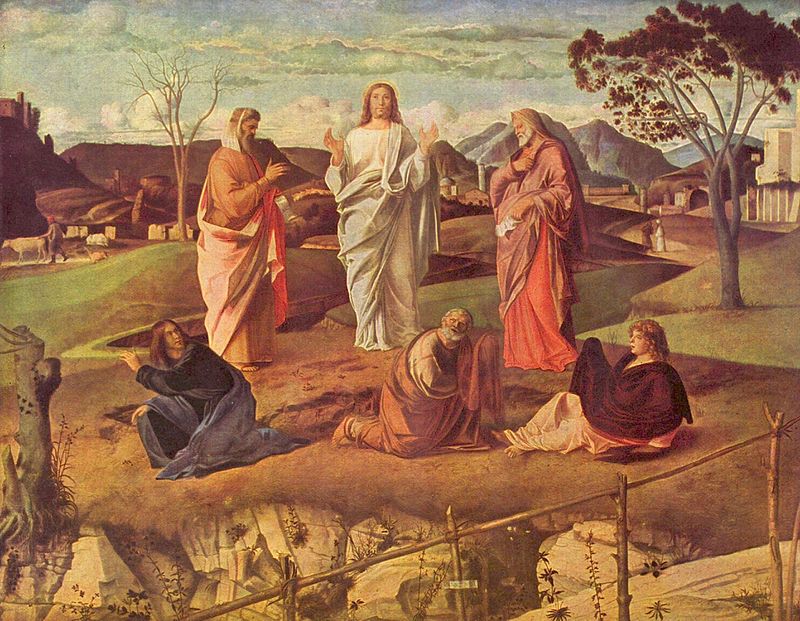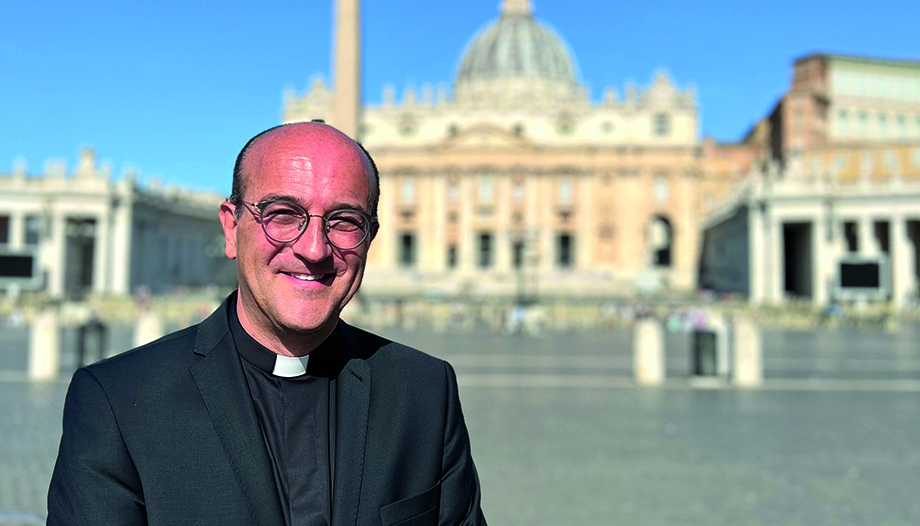Entering into prayer through art. This idea, which has multiple possibilities and has been frequently used in the Church since its beginnings, summarizes, in a brief way, the proposal of this British art specialist.
On its website we can find, for example, next to the image of the Transfiguration by Bellini the following commentary: "Today's picture was painted by Giovanni Bellini around 1480. Bellini was described in 1506 by the artist Albrecht Dürer as "the greatest painter of all". He was famous above all for his impressive altarpieces, and this is one of them.

We see Christ in the center, with a brilliant white robe, as a source of light. A cloud above Christ sends rays of light upon him. To his left, we see Moses, his head covered with a Jewish prayer shawl, holding a scroll, and to Christ's right is Elijah, holding a scroll with the words "God will gather my people." The apostles Peter (in the center), James and John are at the bottom, and Ravenna is painted in the background, surrounded by scenes of daily life in Tuscany.
Out of the cloud came a voice saying, "This is my Son, the Chosen One. Listen to him. With these words it was confirmed to Jesus who he was and what his mission was and what we must do: listen to him! Moses and Elijah identified Jesus as the One in whom the Old Testament promises are fulfilled...ultimately on the cross. However, for me, the phrase that stands out today is the one that opens the passage: that Jesus went up the mountain to pray.
This reminds us again how much he prayed. Even though he was the Son of God, and nothing would have changed that, he prayed and prayed, over and over again. It was during this time of prayer that everything happened as described in today's reading.
We can join Jesus in his prayer, so that we too can change. We can, for example, pray the Rosary. In 2002, Pope John Paul II added the luminous mysteries to the Rosary. The Transfiguration is one of them, the moment when Jesus revealed himself as the Son of God.
The Gospel scene of the transfiguration of Christ, in which the three apostles Peter, James and John appear enraptured by the beauty of the Redeemer, can be considered an icon of Christian contemplation," wrote John Paul II in the apostolic letter Rosarium Virginis Mariae.
John Paul II uses the word beauty as a key quality for entering into the mystery of our faith...a beauty that we can find in some of the works of art we look at in our daily reflections, such as the painting here."
This example shows how evangelical details, ascetic reflection and a great pedagogy combine very well so that the reader also enjoys the art.
St. Clare of Assisi or St. Augustine developed a great commitment to the way of beauty -the via pulchritudinis- for the human being to know the Creator. Many modern authors, such as Paul Cludel or Hans Urs von Balthasar, have also stressed the convenience of this mode of access to God.
However, since the world is the way it is, it is necessary to evangelize through the audio-visual media that are connatural to us. For this reason, Cardinal Ratzinguer in the introduction to the Compendium of the Catechism of the Catholic Church already proposed in 2005: "A third characteristic is the presence of some images, which accompany the articulation of the Compendium. They come from the very rich patrimony of Christian iconography.
From the centuries-old conciliar tradition we learn that the image is also evangelical preaching. Artists of all times have offered, for the contemplation and amazement of the faithful, the most outstanding facts of the mystery of salvation, presenting it in the splendor of color and the perfection of beauty. This is an indication of how today more than ever, in the civilization of the image, the sacred image can express much more than the word itself, given the great efficacy of its dynamism of communication and transmission of the Gospel message.".
The proposal of Christian Art has joined the Church's efforts to evangelize through the language of art. Patrick van der Vorst, former director of Sotheby's London, is responsible for this initiative. Patrick worked at the famous auction house from 1995 to 2010. He was auctioneer and head of furniture and then created his own art appraisal company, ValueMyStuff.com.
With over 500,000 clients, he sold the company in 2018 to begin his seminary studies in September 2019. Since then he has been residing at the Pontifical Beda College in Rome for the Diocese of Westminster, London. A few months ago he received the diaconate and next May he will be ordained a priest. At Christian Art offers personal meditations on the daily Gospel, combining his knowledge of art, Sacred Scripture and Christian asceticism.
The website offers the possibility of subscribing to receive daily Gospel commentaries by e-mail. It is also possible to register on the site with a personal user, which allows you to directly save the comments preferred by each reader, interact with other users and access exclusive content.
Social networks, especially instagram y facebookThey also offer content on a daily basis, and have tens of thousands of followers.
Most commentaries on the Gospel are based on pictorial works of art, but the offer is not limited to paintings or frescoes. It also presents sculptures, reliefs or buildings, both ancient and modern. In this way, the reader gains a remarkable insight into the knowledge of artistic works that are not so famous and with which only experts are familiar.
The more than one thousand Gospel commentaries published over the years cover practically every scene in the life of Jesus, so the site offers a search engine by verse that allows you to find any passage. As time goes by, it will be possible to find and link all the images of the Gospel scenes almost as if they were stills from a movie.








